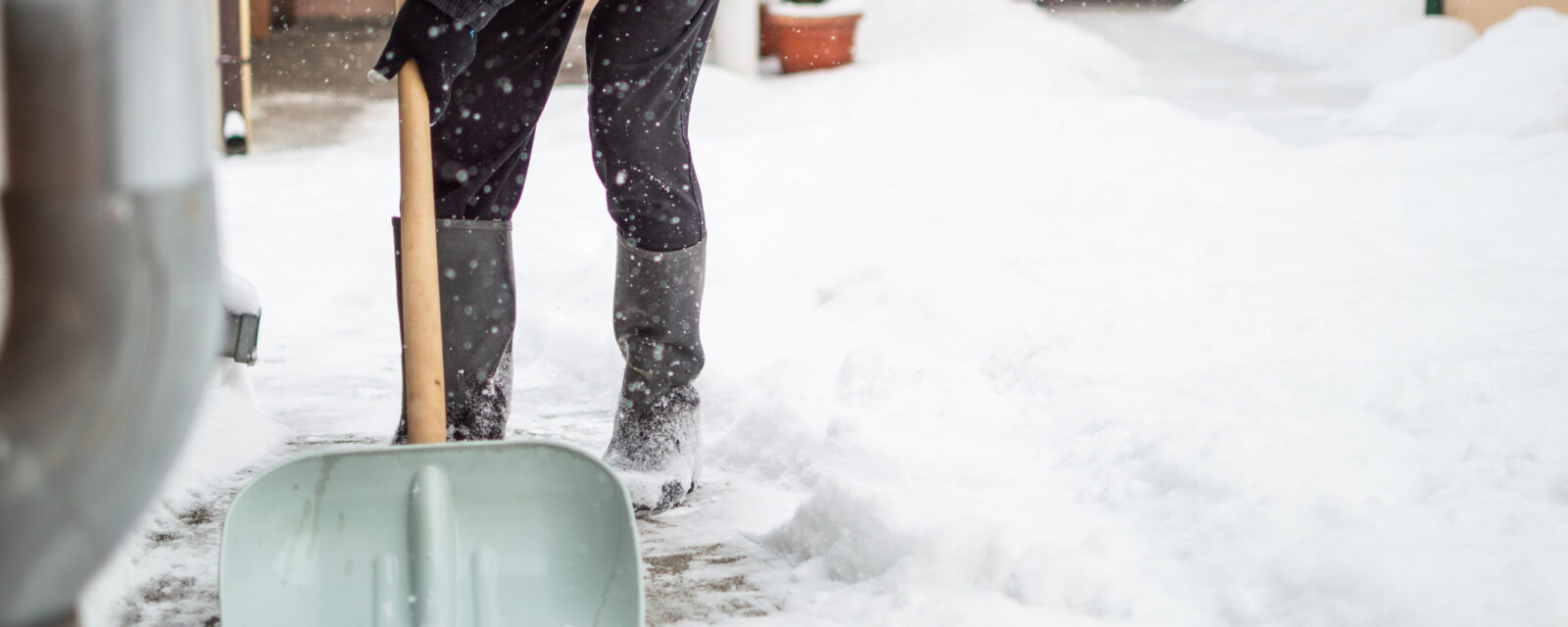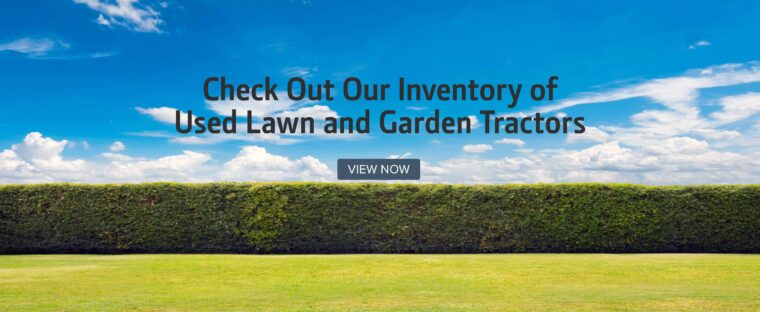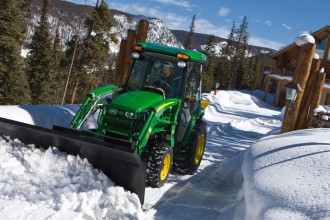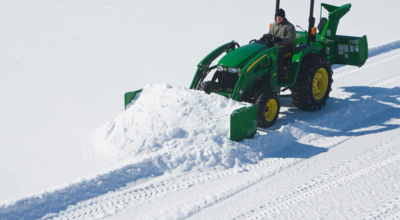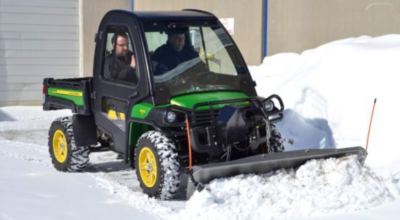Removing snow and ice is challenging, especially in places with freezing winters. It’s not just about getting rid of the snow and ice; it’s about doing it correctly and staying safe. Lots of people mess up and hurt themselves or their equipment, so if you’re a homeowner, business owner, or just want to be ready for winter, you need to know how to remove snow and ice properly. . This guide has everything you need – from picking the right snow equipment to clearing techniques. By following these tips, you’ll keep your environment safe and accessible all winter long.
Key Takeaways
- Maintaining snow removal equipment, stocking up on necessary supplies like salt or sand, and creating a clear plan for tackling snow and ice removal are essential for preparing for winter weather.
- Snow blowers, front blades, utility blades, rotary brooms, poly-hopper spreaders and drop spreaders are some of the top equipment that can be used to remove ice and snow.
- Keep safety at the forefront by using snow and ice removal equipment properly, avoiding hazards, and ensuring a safe removal process.
What is Snow and Ice Removal?
Snow and ice removal is the process of removing snow and ice from different surfaces like roads, sidewalks, and parking lots. It’s important to remove snow and ice to keep places safe and accessible in winter. It helps prevent accidents, injuries, and inconveniences from slippery surfaces. Plus, it makes transportation more accessible and decreases the chance of property damage from snow and ice buildup.
Why Snow and Ice Removal is Important for Safety and Accessibility?
When it snows a lot and gets icy, the roads and sidewalks become slippery and dangerous for people walking or driving. It’s also vital for people with disabilities or difficulty getting around. Clearing the pathways and entrances lets everyone access public places and buildings. Removing snow and ice helps create a safe and inclusive environment for everyone.
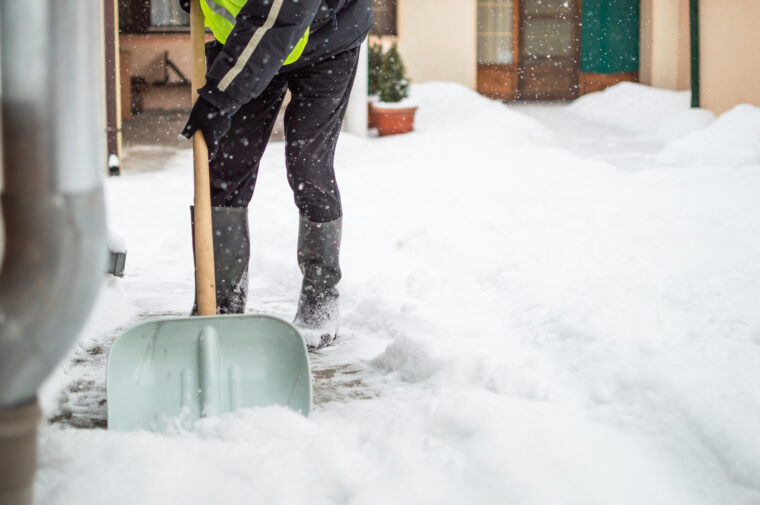
What are the Common Challenges Faced During the Winter Season?
The winter season brings with it a unique set of challenges. Here are some of the winter season challenges faced by:
Lawn Owners
Snow and ice accumulation for lawn owners can be a big problem. It makes lawn maintenance difficult and can even cause damage. Winter dormancy happens when the grass stops growing and looks dull and brown. Cold temperature stress is also a concern, as extreme cold can harm the grass. Lastly, pests and diseases can thrive in colder weather. Lawn owners must be aware of these challenges and take steps to protect their lawns.
Farmers
Farmers also face many challenges that impact their productivity and profits during winter farming. One challenge is dealing with frozen soil, making it hard to plant crops and restrict root growth. It also makes accessing water for irrigation difficult, causing water management issues. Limited market opportunities are another challenge as demand for fresh produce decreases. This results in lower sales and income. Winter also means higher energy costs for heating systems to protect crops and livestock.
Construction Companies
Slippery surfaces in construction sites and colder temperatures increase the risk of accidents. Winter weather can also damage construction equipment, so extra precautions are needed. Limited access to construction sites is also a problem. Snow and ice make roads unsafe, making it harder for workers and equipment to reach the place. Winter presents unique challenges that need careful planning and adaptation to complete projects successfully.
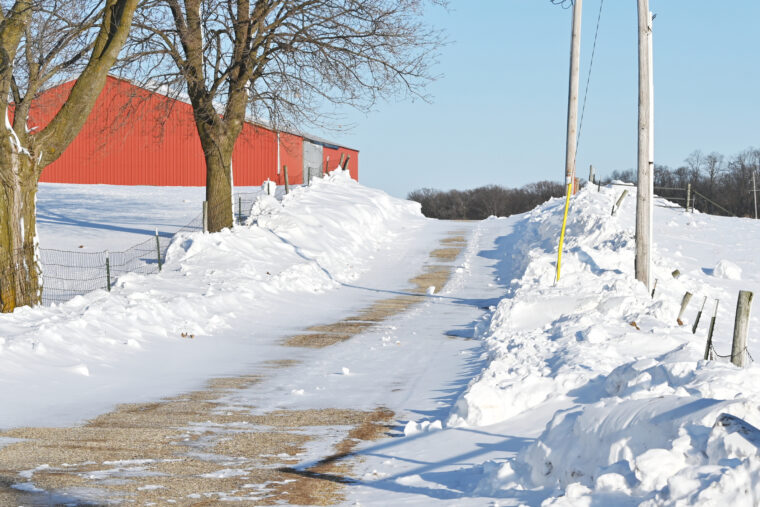
What are the Different Types of Snow and Ice?
When it comes to snow and ice removal, it’s essential to know the different types, so you can figure out the best methods and tools to use. Here are the different kinds of snow and ice you should know to prepare for the removal operation.
Powder Snow
Powder snow is light and beautiful but can be challenging to remove in large amounts. Shoveling and snow blowers are standard removal methods, but they can also be managed by installing snow fences or strategic landscaping. Safety precautions should be taken during removal, and professional help is available.
Packed Snow
Removing packed snow can be challenging and requires effective techniques such as chipping or scraping with a sturdy tool. It is denser and heavier than regular snow, making it more difficult to remove. Breaking it into manageable chunks and using heated mats or salt can help remove it, but caution should be exercised with salt to avoid damage to the lawn and vegetation.
Ice
Ice removal in winter requires immediate attention and can be done using rock salt, calcium chloride products, and heated driveway installations. Adopting a diligent approach, understanding the type of ice, and using proper footwear and winter equipment can reduce accidents. Different types of ice may require other removal methods.
Slush
Slush, a mixture of snow and water, can be challenging. Clearing it with a shovel or snow blower can help maintain clean and stable pathways. Ice chippers and brooms help remove slush. To prevent slush accumulation, surface drainage, and anti-icing agents can be used.
Glacial Ice
Glaciers in your backyard may seem far-fetched, but glacial ice removal can become a reality for individuals in icy regions. Specialized equipment is necessary for this task, coupled with patience and understanding. Understanding the challenges involved can make the process more efficient and safe.
Firn Snow
Firn snow, a dense and hardened ice-snow mix, presents challenges in removal. However, using techniques such as heating or mechanical pulverizing can be effective. Understanding the nature of firn snow and using appropriate removal methods can make the task more manageable and necessary for safe driveways and walkways.
6 Factors that Affect Snow and Ice Accumulation and Formation
Snow and ice accumulation and formation are affected by many factors. It’s important to understand these factors to predict and handle the impacts of winter weather. Here are six key factors that significantly influence the amount and intensity of snow and ice accumulation.
1. Temperature
Temperature is challenging for both snow and ice formation and removal. It’s a delicate balance, as it plays a pivotal role in how quickly or slowly snow freezes, and ice forms, and this also impacts how snow and ice are effectively removed.
2. Moisture Content
The amount of moisture present impacts not just the formation of snow and ice but also how easily it can be removed. A higher moisture density often leads to increased frost formation, making snow and ice denser and more challenging to remove.
3. Atmospheric Conditions
The formation of snow and ice is influenced by atmospheric conditions such as humidity and wind speed. Wet and heavy snow forms in damp and freezing conditions, while light and fluffy snow occurs in dry and cold weather conditions. Pressure systems also play a role, with low-pressure systems bringing more snowfall and high-pressure systems bringing drier weather.
4. Elevation and Altitude
Understanding the role of altitude in snowfall is vital for efficient snow and ice removal. Higher altitudes have more snow due to colder temperatures, and knowing what to expect can help determine the best deicing solutions. This knowledge also aids in predicting future snowfalls and preparing for them.
5. Geography and Topography
Topography and geographical location play a significant role in determining the strategies and tools used for snow removal. Different areas require different methods and equipment based on slope, aspect, and snowfall patterns. Regions prone to heavy snowfall require more robust snow removal mechanisms, while coastal regions with lighter snow may need more straightforward tools.
6. Human Activity
Human intervention can have a significant impact on snow and ice management. Traffic, choice of de-icing agents, and snowplowing methods can affect snow accumulation and melting rates. A balance between community involvement and professional snow removal services is essential for maintaining safe and navigable city roads.
6 Snow and Ice Removal Techniques You Should Consider
Here are six snow and ice removal techniques you should consider to ensure safety and accessibility.
1. Shoveling
Shoveling is a common technique for removing snow and ice. It can be simple and cheap, but it takes effort and time, especially for big areas. Shoveling works well for small properties or as a first step before other methods. Use proper techniques to avoid injury and remove snow effectively.
2. Snow Blowers
Snow blowers are effective machines that quickly remove snow from driveways, walkways, and more. They work by sucking in the snow and expelling it through a chute, clearing the area fast. Snow blowers come in different sizes and power options, so homeowners and businesses can choose what works best.
3. Ice Melt
Ice melt is a chemical that melts the ice by lowering the freezing point of water. You just spread it on the icy surface, and soon enough, the ice starts to melt. It’s an effective way to make things less slippery and prevent accidents. So, if you want to remove snow and ice safely, ice melt is a must-have.
4. Salt
Salt melts ice and snow, making it easier to remove. It works by lowering the freezing point of water, causing the ice to melt. You can spread salt on roads, sidewalks, and driveways to prevent them from becoming slippery. But be careful not to use too much salt, as it can harm the environment and damage concrete surfaces.
5. Heat Mats
Heat mats work well for getting rid of snow and ice. You can install these mats under driveways, walkways, or stairs and turn them on with a sensor or switch. Once they’re on, they generate heat that melts the snow and ice so it doesn’t build up and become dangerous.
6. Snow Plows
Snow plows have blades to clear lots of snow quickly. Municipalities, contractors, and homeowners use them. Plows come in different sizes and configurations for other uses. Using snow plows ensures safe travels in winter.
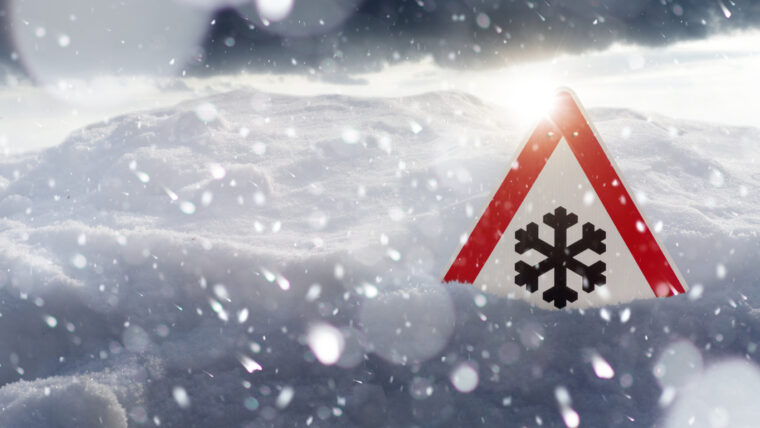
8 Best Practices to Consider for Snow and Ice Removal
Here are the best practices for adequate snow and ice removal to prevent accidents and surface damage and keep traffic flowing smoothly.
1. Safety First
Safety means taking precautions to prevent accidents and injuries. One good practice is using the right equipment and tools for the job, like shovels and snow blowers. You should also use ice melt products that are safe for people and pets. Remember to clear walkways and driveways quickly to avoid slips and falls. And if it’s icy, spread salt or sand for better traction.
2. Use the Right Tools
Snow shovels, snow blowers, and ice melt are all great tools to have on hand. Snow shovels with sturdy handles and wide blades make it easy to clear driveways and walkways. If you’ve got a more extensive area to clear, a snow blower can quickly get rid of heavy snow. And remember to use ice melt or salt to melt ice and prevent accidents.
3. Start Early
Starting early with snow and ice removal is a smart move, as it helps keep your property safe and accessible during winter. You can clear the snow and apply ice-melting materials before it gets too bad, and you won’t have to deal with the rush and potential delays that come with waiting until the last minute.
4. Shovel Strategically
Try to tackle only some of the area at once when shoveling snow. Take it in smaller sections, starting with the walkways and driveways where people walk the most. And remember, push the snow instead of lifting it; that’ll save your back from getting strained.
5. Clear Walkways and Exits
When you remove snow and ice from walkways and exits, you lower the risk of slips, trips, and falls that can hurt someone. Regularly clearing these areas not only keeps everyone safe but also shows that you’re serious about providing a hazard-free environment.
6. Maintain Drainage
When the snow and ice melt, they can create a lot of water that needs to be drained properly so it doesn’t flood or cause damage. You want to clear the snow and ice from the gutters, downspouts, and drains so the water can freely flow away from buildings and walkways.
7. Be Mindful of Environmental Impact
Using eco-friendly de-icing products and techniques helps minimize harm to nature. You can also reduce your carbon footprint by shoveling and doing manual labor instead of relying on heavy machinery. By doing these things, you can remove snow and ice and protect the environment simultaneously.
8. Stay Updated on Local Regulations
Every city and town might have specific guidelines on when and how to remove snow and ice from sidewalks, driveways, and other places. By knowing these rules, you can make sure you’re doing things the right way and not getting any fines. Plus, it helps you decide which areas are the most important to clear first.
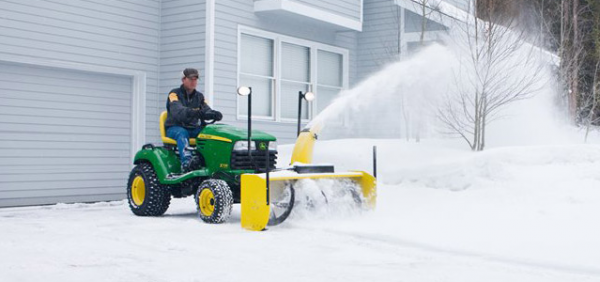
What are the Available John Deere Snow and Ice Removal Equipment?
John Deere has a variety of snow and ice removal equipment, including:
John Deere Snow Blowers
John Deere snow blowers can clear snow from driveways, sidewalks, and other places. John Deere offers different sizes and features for snow blowers so everyone can find what they need. Whether you have a little snow or a big winter storm, John Deere snow blowers can handle it.
John Deere Front Blades
John Deere front blades are made just for John Deere tractors and are known for being tough and effective at clearing snow and ice from roads, driveways, and other surfaces. They have all different sizes and options so you can find the perfect blade for any job. Whether clearing a little area at home or an ample commercial space, John Deere front blades are the way to go for snow and ice removal.
John Deere Snow/Utility Blades
John Deere snow blades make snow removal and light dirt work easier. The blade angles hydraulically, 30 degrees to the right or left, and it also oscillates 5 degrees to the right or left. These blades are designed to work best with John Deere D-series skid steers and compact track loaders, but they can also be used with other brands.
John Deere Rotary Brooms
John Deere rotary brooms are designed to clear surfaces like sidewalks, parking lots, and driveways. The rotary brushes are powerful and can handle heavy and compacted snow. They leave behind clean and safe pathways. These brooms are durable, reliable, and easy to use, so homeowners and professionals love them for snow and ice removal.
John Deere Poly-Hopper Spreader and Drop Spreader
The John Deere poly-hopper spreader spreads salt, sand, and other materials for melting ice and providing traction. It has a durable hopper with a lot of material for efficient spreading. The John Deere drop spreader is excellent for precise spreading in smaller areas. It has adjustable flow settings for even coverage. Both options from John Deere are reliable and built to handle harsh winter conditions.
Where Can I Find John Deere Snow Removal Equipment?
If you are looking for John Deere snow removal equipment, you can contact your local John Deere dealer. These nationwide dealerships offer a wide range of John Deere snow removal equipment, including snow blowers, plows, and blades. Don’t let the winter weather slow you down, get the reliable and durable John Deere snow removal equipment today.
If you enjoyed this post or want to read others, feel free to connect with us on Facebook, Pinterest, Twitter, or Instagram!
